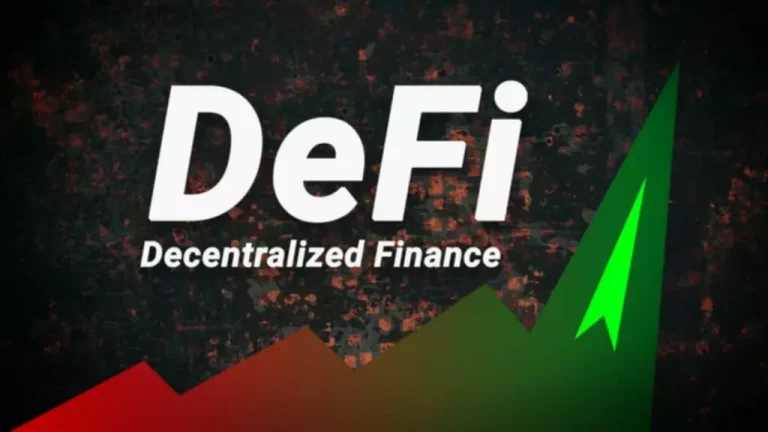Both transitivity [67] and constraint [55], which are closely related, indicate the extent to which individuals can exploit their connections. Cluster size is represented by the number of nodes that form the cluster, i.e. people and companies. This indicates the potential magnitude of the cluster or the amount of influence it could have on a population.
Additionally, it reveals the market’s CAGR status together with its past and projected performance. Businesses have access to a wealth of information, including a SWOT analysis, with the help of a sizable [119 Pages] report, enabling them to create company plans for navigating the specifics of the market and achieving a profitable trajectory moving ahead. (1) In this example, there is only one target classification, so the node table has only one gain. Nodes represent the total number of cases at each endpoint, and node percentage is the total number of cases at each node divided by the total number of cases at the root node.
- Moreover, the growing awareness of the impact of financial crime on society is also driving the AML market.
- After the announcement of AML-IV, they continuously increase their brokerage position given the observed betweenness centralities, especially the corporate forms.
- Money laundering (source of funds) and terrorism financing are both addressed by AML legislation (destination of funds).
- Banks have responded to these trends by investing heavily in people, manual controls (“checkers checking the checkers”), and systems addressing point-in-time needs.
The independent insured person’s age range is divided into three groups, “0” means the insured person’s age is between 0–35 years old, “1” means the insured person’s age is between 36–55 years old, and “2” means the insured person’s age Over 55 years old. Because the statistics of people’s anti-money laundering are limited, the age distribution of money laundering molecules cannot be obtained. The payment method of independent variable is divided into payment (one-time payment) and period payment (payment by installments), which are expressed by “0” and “1” respectively. The characteristics of large and suspicious transactions of insurance companies include premium premiums. Money launderers have sufficient illegal income in their hands and want to withdraw funds in a short time. Means, this article believes that the choice of payment method is likely to affect the type of customer, but this variable is not involved in the current large and suspicious transaction reports.
Ayalon states they chosen SAS’ new solution because it can handle highly complex transactions with multiple criteria to check for validation. They also claimed SAS was able to help them finish the project within a short deadline that did not allow for experiments. The solution consists of anomaly detection software accompanied by a dashboard with multiple visualization capabilities.
They can also adapt to new and evolving threats, making them a valuable tool for detecting emerging financial crime trends. These technologies can also help financial institutions with enhanced customer due diligence processes; thereby propelling the market growth. Based on empirical data from Columbian criminal organizations and the Italian Mafia, the UNODC [46] observed that law enforcement transformed several hierarchical structures into core groups, making both typologies a common observation. An alternative explanation is that globalization has contributed similarly to crime as to legitimate business, by transforming hierarchical structures into more flexible collaborative networks [47]. The observed developments therefore seem to be fully explained neither by stronger enforcement nor by globalization alone.

Its mission is to devise and promote international standards to prevent money laundering. Shortly after the 9/11 attacks on the US, FATF expanded its mandate to include AML and combating terrorist financing. With 189 member countries, its primary purpose is to ensure stability of the international monetary system. The IMF is concerned about the consequences money laundering and related crimes can have on the integrity and stability of the financial sector and the broader economy. As another example, in a typical bank, data infrastructure and systems are not well positioned to quickly spot the connections among small cash deposits made by many different customers and wire transfers sent by those customers to the same recipient. The exhibit illustrates how a typical “smurfing” scheme works, in which cash deposits are broken down into amounts below the reporting threshold of $10,000.
It also analyses the impact of COVID-19 on the industry and provides recommendations on how businesses can adapt to the changing market conditions. The report identifies key market restraints, such as economic constraints in emerging countries and business market obstacles. By understanding these risks and challenges, businesses can develop strategies to mitigate them and achieve long-term success in this exciting and dynamic industry. In addition, it provides an in-depth cost analysis and insight into the intricacies of the supply chain. These solutions automate monitoring and reporting processes, reducing manual work and minimizing errors. Financial institutions must adhere to strict AML laws and regulations, such as the USA PATRIOT Act and FATF guidelines.
The network generation process is repeated five times to generate five independent random samples. Figure 1 shows one of the retrieved networks with separated clusters and diverse criminal indicators. Besides the amount of money being laundered and the significance of this problem, another strand of research aims at detecting laundering activities. For instance, some applied research uses machine learning within the banking system to detect potential money laundering activities [34]. Gao and Ye [35] review machine learning techniques that can improve the efficiency of money laundering detection, and promotes the use of network analysis?

Improved “know your customer” rules, and a wide range of financial and non-financial institutions like second-hand car dealers and real estate agents, who have to report unusual transactions, pose a new challenge for criminals. They have to find alternative and more sophisticated solutions to deal with the new regulatory environment. Businesses should use more advanced tools to fight against financial crimes and terrorist funding. AML compliance software, such as Sanction Scanner’s solutions, is developed to protect companies from financial crimes. It collects and verifies customer information, ensuring that institutions know their customers and can detect unusual behavior promptly.

Even better, they also offer an opportunity to simultaneously cut structural costs and improve the customer experience. As they take up these new tools, banks are shifting financial-crime compliance toward a more forward-looking and sustainable approach. It examines financial institutions’ (FIs’) evolving technology requirements for Know Your Customer (KYC)/anti-money laundering (AML) processes and systems. This report examines the What Is AML Risk Assessment compliance obligations around cryptocurrencies, the financial crime risk management approaches used by institutions in crypto-asset markets, and the technology solutions emerging to tackle cryptocurrency-related financial crime. Innovative application of data visualization techniques in various fields has gained momentum in the past decade (Bolton and Hand, 2002; Chang et al., 2008; Didimo et al., 2011; Singh and Best, 2016).
The first-degree egocentric level of each retrieved node is then searched for, of which a random maximum sample of 50 subsequent nodes per source node are collected for both people and corporations separately, with a maximum of 2500 connections per accessed data table. This limitation is implemented due to external restrictions on retrieving a complete dataset and to avoid a single large company filling all the available spots. When anti-money laundering policies intensify, what should happen to the money laundering resources available and how would that affect existing criminal networks? Since a more complex regulatory setting requires an increased variability to meet the new needs [74], we expect that money launderers have to improve their skill-set to remain undetected. AML regulations generally aim to reduce secrecy and enforce transparency with know-your-customer responsibilities and duties to report suspicious transactions for the gatekeepers of the financial sector such as banks and notaries.
SAS offers an anti-money laundering solution which they claim can use data sources to find trends pointing to financial crime. A client insurer can use the software to analyze transactions based on data and trends from their existing systems such as CRM, another customer record system, or those that drive customer-facing web applications. Many of the institutions put in place a “know your client” measure, which can help flag suspicious transactions based on particular clients. Transactions and processes https://www.xcritical.in/ at financial institutions are recorded extensively so that law enforcement can trace the crimes back to the source. Visually analyzing the centrality of nodes within the network shows (see Fig. 7) that money laundering related individuals have decreased their human connections since AML-IV was announced but increased their corporate degree. After the announcement of AML-IV, they continuously increase their brokerage position given the observed betweenness centralities, especially the corporate forms.
Money laundering (source of funds) and terrorism financing are both addressed by AML legislation (destination of funds). It can be seen from the above introduction that financial institutions need to conduct comprehensive monitoring of financial fraud. Financial fraud requires a comprehensive analysis of a large amount of information, and backward manual management methods can no longer adapt. Only by relying on high-tech methods, combined with manual management, and improving the automation level and processing capabilities of analysis, can the accuracy and processing capacity of risk prediction be gradually improved.

Recent Comments